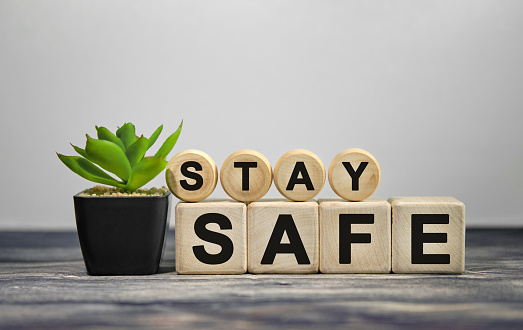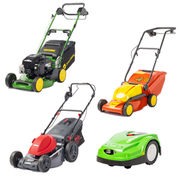[Big 2021] The future of online sales and the logistics of tomorrow
How to speed up distance selling? With which services, which logistics? What innovations should be put in place to support consumer needs? Answers from Delphine Robin, Marketing, E-Commerce and Partnerships Project Manager at DHL who supports this upward trend in e-commerce and Paul Garcia, Sales Director at Octopia who is developing technology to help companies transform into a marketplace.
In 2020, there was 8.5% growth in B2C e-commerce in France (with – 10% on the service and + 32% on the product, 70% of which comes from marketplaces). Significant growth, while the share of online sales represents only 13.4% of retail trade. In B2B, online sales revenue globally in 2019 was higher than B2C sales. In 2023, 17% of B2B sales will be made via a digital channel. Opportunities remain to be seized for companies.
Logistics warehousing contractTake action:Logistics warehousing contract
The keys to developing your marketplace
The Marketplace is the future of e-commerce and the past of physical commerce, as the Champs Élysées is a physical luxury marketplace and Rungis a physical fruit and vegetable marketplace, explains Paul Garcia. Twenty years ago, everyone launched their own e-commerce site with significant marketing and logistics costs. The future is: how to bring together on the same site a maximum of actors to have many offers and many products in order to satisfy the consumer?
Among 1 million merchant sites in the world, 15,000 are marketplaces. These 1.5% of sites made up of marketplaces generate 52% of the overall e-commerce volume (75% in China). In France, in the TOP 10 merchant sites, there are 8 marketplaces, including Veepee, Decathlon and C-Discount. “The future of e-commerce is the marketplace, it's tomorrow's winning model,” insists Paul Garcia.
But you have to do both, you have to have your merchant site with your own products and be open to third-party sellers to complete your offer (like La Redoute, for example). The interests of marketplaces are numerous:
A marketplace, concretely?A marketplace, or market place in French, is a buying and selling platform between professionals and individuals. There are generalist platforms (e.g.: Amazon, Leboncoin, Fnac, etc.), or specialized in one or more product categories (BackMarket, Etsy, etc.). Concretely, when a customer buys a product, the marketplace instantly informs the seller of the act of purchase, then the seller takes charge of the order (packaging, shipping, customer relationship) and the marketplace is remunerated by deducting a percentage from sale as well as various costs specific to the marketplace (subscription, selling and management costs). |
![[Big 2021] The future of online sales and the logistics of tomorrow [Big 2021] Le futur de la vente en ligne et la logistique de demain](https://website-google-hk.oss-cn-hongkong.aliyuncs.com/drawing/article_results_6/2022/2/26/091abbe2813a6f0a6340dd71a0a2e0e0.jpeg)
Read also VSE / SME: 10,000 digital diagnoses, a label for large marketplaces
The keys to e-commerce success
Know the markets
Paul Garcia and Delphine Robin affirm that one of the prerequisites for a successful e-commerce is to know the local markets, the needs of consumers according to their geographical area and this according to the product you want to sell (eg: Nordic countries want more "green" products, while Asian countries are very attached to luxury products).
To do this, it is necessary to be accompanied by the best service providers, in terms of logistics and IT.
Provide a good customer experience
The success of a website also depends on the most fluid customer journey possible (from order taking, to validation of the basket, to order tracking, to delivery). “The key to success is the customer experience,” according to Paul Garcia. Customer satisfaction is based on three points:
A pitfall is to be avoided in e-commerce: think of yourself rather than your customer when designing a site.
The question of returns still poses difficulties. On clothing sites, return rates are up to 30%. Return procedures must also offer an easy customer journey.
Read also [Big 2021] How to determine your business model?
Last mile delivery: more responsible delivery
Today, the management of the last mile is a major issue for both local authorities and businesses. Between urban congestion and greenhouse gas emissions, the question of the last mile has a considerable impact on the cost of logistics.
And while some collaborative platforms now offer the option of choosing greener solutions (on foot, by bike, at the neighbour's, etc.) and slower, consumers are still very sensitive to express delivery. According to Delphine Robin, for 74% of users logistics is more important than the product itself. That is to say that being delivered quickly, to the place and according to the desired methods is essential in the choice of the e-commerce site.
A balance must therefore be found between “being delivered quickly, with the right means of delivery”, for Paul Garcia.
Read also[Interview] Olivier de la Chevasnerie: "The desire to undertake is still there"
And tomorrow ?
For Delphine Robin, E-commerce Marketing and Partnerships project manager at DHL, the future of e-commerce will be based on the use of data collected from navigation and users to know customer needs and adapt its offer (e.g.: watch the geographical consultation data of a site, to extend its delivery area).
Greener logistics
In less than 2 years, DHL should fly electric cargo planes, piloted by a single person, which will recharge in 30 minutes, with 815 km of autonomy and which can transport 1.2 tonnes of goods. DHL also has a zero carbon emissions target by 2050 by greening its car and air fleets.
The environmental issue is decisive for marketplaces because the products come from all over the world. For better mobility, stocks are placed as close as possible to customers in European warehouses. C-discount today no longer has a single truck leaving its warehouses half empty, and the size of the boxes is now adapted to the products.
Read also New aid for the greening of vehicles and sustainable mobility
The explosion of C2C and second-hand commerce
Airbnb, Vinted, Vestiaire collective, sites for renting games, maternity clothes, examples of successful second-hand trade or new consumption models are numerous. There is more and more innovation in e-commerce between individuals. The second hand is the future.
Read also A new tax on VTC and delivery internet platforms from 2022
Cross-border e-commerce
"Cross-border e-commerce is growing 3 times faster than domestic e-commerce" according to Delphine Robin. Starting with the European market is simpler, no customs duties, the single currency and the same social networks.
Internationally, the leading e-commerce market is China, followed by the USA. Markets that are more difficult to reach with particular technological attention points: translating your site, selling in several currencies, paying attention to duties and taxes due, managing customer returns. To launch internationally, the easiest way is to go to existing marketplaces to make yourself known.
Some keys to boost your e-commerce |
Read also Getting paid by your European customers
Sandy Alleb










Find out how to remove the tartar on your dog's teeth
Under what conditions can you have an inflatable jacuzzi on its terrace or balcony?
Grass mower a perfect lawn!
Grandmother stuff: 3 stuff to remove a lawn stain